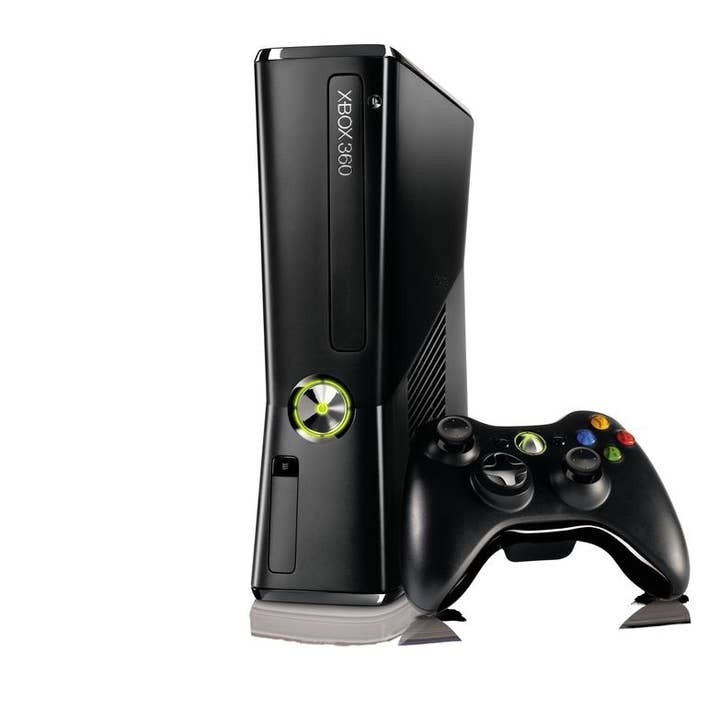Can Microsoft Launch the Next Xbox in 2012?
Digital Foundry analyses the latest "Nextbox" rumours.
A new, ultra-power next-generation Xbox in 2012? Apparently so, according to a report last week by Future's Edge Online. Its story suggests that PC-based "target platforms" are with key developers now, including Assassin's Creed creator Ubisoft Montreal. Not only that, but it also suggests that Sony too is working on its next-gen hardware, with one of its major in-house studios transitioning now to the new platform and even helping with the hardware design.
There's an old saying that there's no smoke without fire - and rumour-mongering about the new Microsoft console is coming thick and fast from various sources with differing levels of credibility. A lot of stories are emanating from the MS Nerd blog, suggesting that the new machine is codenamed Xbox Loop, and features a dedicated SoC (system on chip) arrangement utilising mobile-style architecture, and bespoke cores for dealing with graphics, AI, physics, sound, networking and other elements and - most bizarrely of all - running a Windows 9 core.
Meanwhile, French site Xboxygen says that the machine features a hex core CPU, 2GB of system RAM and dual AMD graphics cards -presumably with their own dedicated RAM, with the system due to receive a public debut less than two months from now at the January CES in Las Vegas.
Console launches are phenomenally expensive. Would Microsoft really sacrifice its profit-making Xbox 360 so soon to dominate the next-gen market?
If there's any truth to this latter story, I strongly believe that this is a description of what Edge terms the "target platform" - a PC using off-the-shelf parts that bears some passing resemblance to the upcoming console spec. I would expect a next-gen console to ship with at least 4GB of RAM in total - possibly more (according to a Crytek presentation they are hoping for 8GB or more) - and bearing in mind the advantages Microsoft enjoyed with the unified memory pool in the Xbox 360 (system and graphics RAM combined), a similar arrangement will likely carry over to its next-gen successor.
As for the Xbox Loop story, it sounds very much like another project entirely - if it exists at all. The notion of combining all processing elements into a single chip is hugely compelling and has become the standard in the mobile sector, but there's a reason why the console platform holders launch with individual chips and combine them later on in a smaller hardware revision: the designs of a modern home console are simply too complex and power-hungry to integrate right from the off.


Consider the Xbox 360S "slim" revision that shipped in 2010. It took Microsoft five years to transition its current generation console using a discrete CPU and GPU onto an integrated SoC. It took that long for the 45nm fabrication process to mature, and for chip yields to reach a high enough level that a single chip could be viably deployed in a cheap, mainstream product. The notion of 360's CPU and GPU being integrated into a single chip was first revealed by tech journalist Dean Takahashi two years prior to it actually shipping - a suggestion of just how long the process of designing, taping out then manufacturing these chips takes. Nextbox will be bigger and much more complex, presumably running on the smaller 28nm fabrication process: the notion that a SoC would be ready for 2013, let alone 2012, doesn't really make sense.
Certainly, it's also highly unlikely that Windows 9 would be ready for showtime any time soon. It's far more likely that Microsoft engineers will spin out their own core OS based on an existing mature, reliable Windows kernel - which is apparently what happened with the Xbox 360. Indeed, Microsoft has already said that elements of Windows 8 will end up in an Xbox product at some point.
So what of the shocking Edge 2012 release rumour? Industry analyst Michael Pachter is unequivocal about this.
"Those rumours are silly. Microsoft is still selling a ton of Xbox 360s, and they won't replace the existing one until sales begin to slow," he told our sister site IndustryGamers.
"I think the rumours are based upon leaks about modifying the current Xbox 360 to allow it to operate Windows 8. I fully expect a new model of Xbox 360 by holiday 2012, but don't think we see a new console altogether from Microsoft until 2014."


While Pachter has garnered a reputation for forecasts of varying accuracy, it's difficult to argue with the basic logic here. While the prospect of 360 running Windows 8 is unlikely (MS makes money selling expensive operating systems, not giving them away with its consoles where profits are wafer-thin), the Xbox division is a business that has sustained enormous losses across two console launches and in the here and now, it is doing remarkably well - particularly in its native US territory.
Moving on to the next-gen within 12 months would essentially see Microsoft calling time on its own profits, and would also introduce a bunch of marketing anomalies: for example, 343 Industries' Frank O'Connor has stated unambiguously that Halo 4 is an Xbox 360 title (if the E3 release of the Halo 4 packshot didn't already convince you). It's hard to imagine that Microsoft would launch its next-gen console within a month or two of its flagship franchise game appearing on the older console.
It's also difficult to construct a compelling financial argument for a 2012 release based on the sheer cost of launching a new console. The 2005 release of the original Xbox 360 was an enormous investment for Microsoft - but one it had to make to beat Sony to the punch and to seriously challenge what was at the time the all-powerful PlayStation brand.
To that end, Microsoft really pushed the boat out in terms of its per-unit manufacturing costs. The 90nm CPU and GPU were running at what was at the time a state-of-the-art fabrication process, and yields (i.e. chips that worked off the main production run) weren't exactly wonderful, adding further to the notional cost of the console. Cost-cutting in other areas led to the RROD, overheating console debacle. Even a year later, Sony still had problems with the same 90nm fabrication process - hence the 90nm Cell processor having one SPU disabled in order to produce higher yields.
